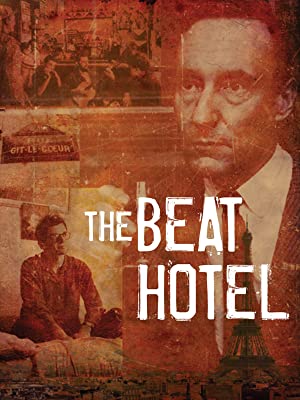
The lives and works of the Beats are a continuing source of fascination for many. Jack Kerouac’s On The Road, William Burroughs’ Naked Lunch, and Allen Ginsberg’s poem “Howl,” were a few of the first works in a counter-cultural literary revolution. What separates the Beats from the Boomer hippies of a decade later was their keen intellect, as well as their pioneering spirit in questioning authority.
It is this ongoing interest in the accomplishments of the Beats that fuels director Alan Govenar’s new film The Beat Hotel. Fed up with censorship and blind conformity in Eisenhower’s America, a number of writers and artists fled to Paris. Somehow they all wound up together at a cheap hotel in a rundown area of the city. For a while, it was paradise.
Word of mouth led Allen Ginsberg, Peter Orlovsky, and Gregory Corso to the building on rue Gil le Coeur. They were soon joined by William Burroughs, Brion Gysin, and Ian Somerville. The place quickly became known as the Beat Hotel, in honor of the residents who found their way there. The hotel was run by Madame Rachou, who had previously been part of the French Resistance during World War II.
Madame Rachou had a soft-spot for society’s outcasts. The hotel was filled with broke writers, artists, musicians, photographers, and gays of all backgrounds. She welcomed everyone with open arms. The rent was dirt cheap and included a hearty meal each day as well.
The film focuses on the years 1957-1963, the very height of the Beat era. The catalyst for all of the media attention the “beatniks” received was the publication of Kerouac’s On The Road. It was a sensation, even if it had been written some five years prior to publication. By 1957 Kerouac was already beginning to swing to the right, a process that would continue until his death in 1969.
Meanwhile in Paris at the Beat Hotel, some major works were in process. Ginsberg began his classic poem “Kaddish,” Burroughs finished Naked Lunch, and Gysin developed what came to be known as the “cut-up” method of writing. The residents entertained themselves in creative ways. One of these was through the widespread use of hashish, but others were less mind-expanding. Burroughs reportedly had mastered the trick of “disappearing” before your very eyes, which was one diversion. Gysin constructed something he called the dream machine, which was described as “The only work of art meant to be seen with your eyes closed.” It was a strobe-like light, which was timed to simulate the alpha waves which produce dreams. Reportedly it was quite effective.
Sadly, all good things must come to an end, and when the hotel was sold, most of the residents departed as it began the process of gentrification. Magic moments, “scenes,” or whatever one chooses to call the instances where an extraordinary group of artists congregate in one place and time are always shifting, but for a brief period of time everything came together at the Beat Hotel.
The era may be best remembered by the legendary curmudgeon William Burroughs himself. In the final year of his life, Burroughs looked back at his time there, and wrote in his journal, “Can I bring it back? The magic, and danger, and fears of those years? Can I bring it back?”
The Beat Hotel premieres at New York’s Cinema Village on March 30, 2012.